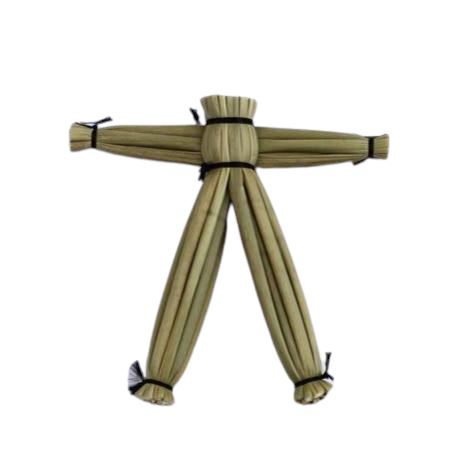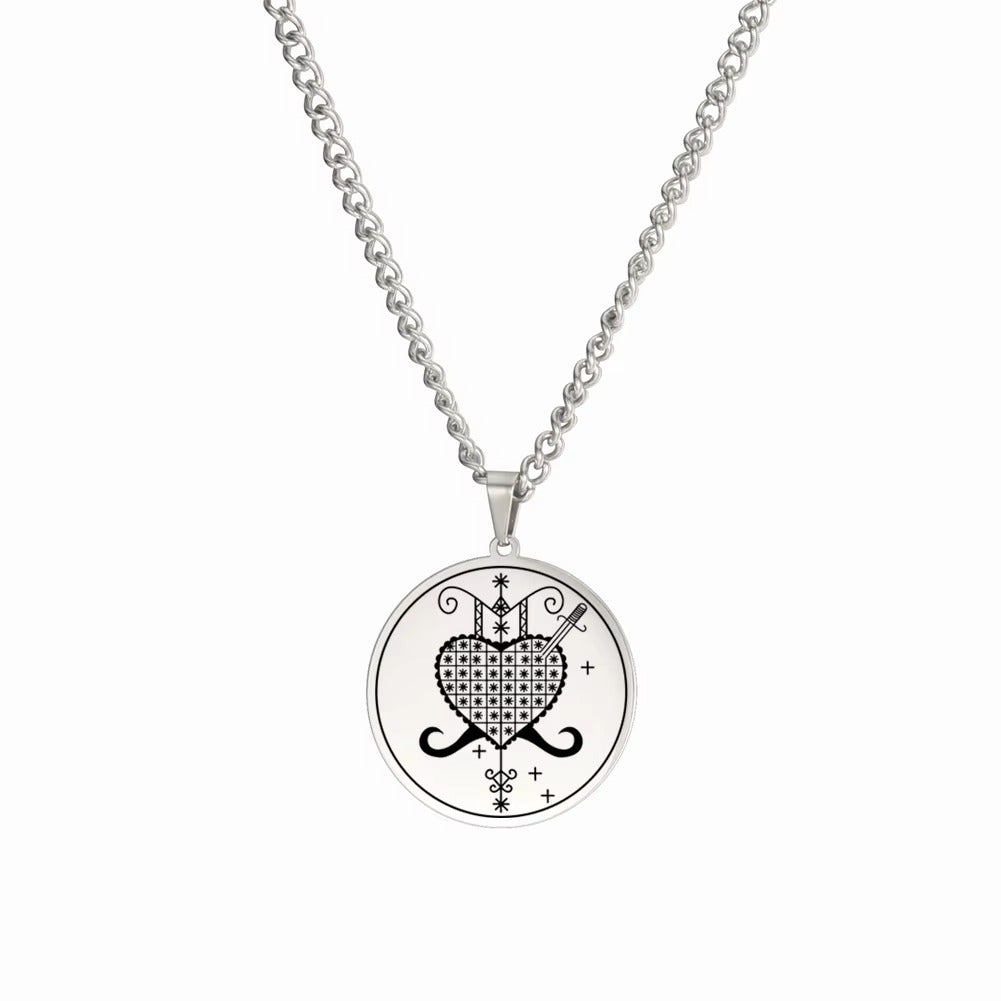Find the Most Powerful Voodoo Symbol for You
The symbols of voodoo constitute a most serious subject.
Black magic for some, religions for others and even simple myth for still others, we are here faced with a mysterious subject at the center of many questions.
Originating in the European colonies in America, voodoo (sometimes written voodoo, or voodoo) has its roots in the ancient animist religions of West Africa, to which elements of Catholicism and paganism came to be attached.
If today we decided to write an article on the symbols of voodoo, it is quite simply because few forms of spirituality are as linked to magic, the supernatural and the occult arts as this one.
Indeed, voodoo bases a large part of its tradition on belief and superior spirits, the loas, which the priests adore and venerate during strange rituals. Often, using a voodoo symbol will actually just be a way of interacting with them.
In short, this religion is simply fascinating (this is why we have dedicated this entire collection to it) and, today together, we are going to try to learn more about its strange symbols.
Contents :

1st symbol: the voodoo doll
If you've ever had the chance to visit Haiti, New Orleans or even the Caribbean in general, you've definitely seen a voodoo doll.
If this is not the case, you must still get an idea of it through the tons of films and novels that present it to you... An idea yes, but probably false.
Indeed, Hollywood films depict voodoo as a kind of dark witchcraft, and its dolls as demonic instruments of suffering and destruction.
The reality is quite different.
In fact, the use of a voodoo doll is based on a desire to do good, to help and heal rather than to harm.
By allegorically representing a person, this type of object allows us to convey our intention to them, whether good or bad.
The image of the doll filled with needles supposedly causing aches and pains is not necessarily false, but the aim is therefore more to heal than to injure.
Sometimes also, a voodoo doll can be used to communicate with certain entities, deities or ancestors. Properly constructed and then used, these true voodoo symbols can in fact serve as a communication channel, a bit like a telephone line directly connected to the spirit world.
In short, today, voodoo dolls still exist and can be purchased, but probably not for malicious purposes. As such, here is a doll that we offer on our site, and which should please you with its simplicity.
2nd symbol: the mojo bag
The mojo bag is a prominent voodoo symbol.
Basically, it is a small bag containing various ingredients which, through their intrinsic powers, will influence the wearer.
Where the power of the mojo bag lies is in its ability to merge, combine these powers to ultimately create something greater.
Sometimes also called “grigri bag” or “conjuring bag”, this great symbol of voodoo will be powerful allies to mages and other sorcerers.
However, there are certain rules to follow if you want it to work…
First of all, you will have to be the only person who never touches him. (That said by the way, this advice holds for most of your magic accessories).
To create a relationship with him, you can also find a name for your mojo bag.
It doesn't matter much how the bag is made, as long as you like it. Jute, more expensive fabric, leather or even plastic, this is not where the power of this voodoo symbol will lie.
No, it will rather be what you put in it that will be important.
On this subject, moreover, we have no advice to give you: the desired goals and esoteric traditions can be so varied that listing all the possibilities would take hours.
In short, since the beginning of this point, we have been talking to you about the “mojo” bag without ever having defined what this famous mojo is.
This will be done by reading this simple definition from Wikipedia …

3rd symbol: veves
If you visit the collection that we recommended in the introduction, one thing will quickly jump out at you: most of the lucky charms found there are strange amulets engraved with mysterious voodoo symbols.
In fact, these are precisely what we call veves.
To put it simply, the voodoo tradition presents us with different loas, kinds of spirits of divinities, a bit like the religion of the ancient Greeks or the Celts of the past.
To represent them, priests developed a system of symbols, each associated with a particular loa.
Often used as magical sigils, veves are kinds of seals which, traced on the ground or on lucky amulets, will charge the place where they are with the energy of their loa.
Far from being just vulgar scribbles, the different veves have been thought out since the origins of voodoo to best represent the essence of their associated entity.
Look for example at this Erzulie Freda amulet, and you will feel a kind of sensual and dangerous femininity...

4th symbol: the rabbit's foot
The rabbit's foot is undoubtedly one of the most famous lucky charms in the world... but also a leading voodoo symbol!
Using animal parts as grigri is a common practice in most African spiritual traditions. It is therefore not surprising that voodoo (which has its roots there) does so too. (An African sorcerer from slave communities necessarily practices the rites of his ancestors.)
The idea behind all this is quite simple: nothing can contain the essence of a being better than the being itself or, at least, a part of it.
Thus, the rabbit's foot is basically supposed to make its wearer benefit from the qualities associated with this animal.
Obviously, we can think of capacities for discretion, speed or even ingenuity. This is all true, but it is not the main reason why people are interested in this voodoo symbol.
You should know that the rabbit is a particularly prolific animal, capable of generating impressive offspring through unfailing fertility.
Many cultures see the rabbit's foot as a lucky charm for fertility or, more broadly, for masculine power. Such a white magic ritual will use it to chase away bad luck, while such an incantation will use it to create trance states.
When we think about it, carrying a part of a dead animal can seem cruel, barbaric.
If you want our opinion, that's absolutely correct. It's no coincidence that, these days, most rabbit feet you find will be artificial.
So, a voodoo symbol does not always rhyme with archaic tradition!
5th symbol: fire
It is quite complicated to talk about fire as a religious symbol as this element is present in almost every belief in the world. Candles are present on all temples and altars. Some mediums and clairvoyants use it in their practice. And many spells require the presence of a flame.
In short, throughout history, fire has always occupied an important place in many mythologies, cultures and religions. Obviously, voodoo is not left out.
Fire consumes and burns, transforming physical matter into smoke and ash. It is therefore not surprising that this element is associated with changes and magical transformations.
Voodoo priests can also use it during ceremonies where offerings will be burned in large fires in order to reach the spirits.
When herbs are thrown in, some practitioners can experience mystical trance states, or purifications can take place.
Truly, fire is a central element of the practice of voodoo. If you would like to learn more on the subject, here is an article from the site franceculture.fr which describes many elements specific to voodoo ceremonies and rituals.
More broadly, here is a list of some characteristics that can be linked to fire as a voodoo symbol :
- Strength
- Courage
- Change (positive and negative)
- Hate, anger
- Strength
- Passion (especially carnal)
- Power and its conquest
- Self affirmation

Warned about Voodoo
We couldn't finish this article on the symbols of voodoo without warning you: despite what its practitioners say, it seems that voodoo is close to witchcraft in many points.
The line between mysticism and black magic rituals is fine. That between healing and sacrifices too. Just like that between an offering made to a deity or a demon too.
Voodoo magic makes its initiates become rich, allows for healing and elevates souls. She can also create zombies, bring back a loved one against their will, and bring disease.
These kinds of topics can be fun to joke around with, but they are the most serious of all.
Voodoo dolls, if used incorrectly, can cause pain and illness. Loas have many facets specific to demons that monotheistic religions warn us about. The ingredients in your mojo bag can rot and make your pocket stink. Fire burns.
Anyway, you get the idea.
Believers receive their power from God. However, Satan also has power...and this power always comes at a price. Don't forget it if one day you want to use a voodoo symbol.
So look at what the cath.ch site says about it if you want to get another perspective on the issue. The picture drawn is far from rosy.
Concretely, voodoo involves the worship of spirits and occult practices such as divination or invocation. These practices are strongly condemned by God throughout the Bible, as in Deuteronomy 18:10-11:
“ Let there be no one found among you who makes his son or daughter pass through the fire, no one who practices the profession of soothsayer, astrologer, augur, magician, enchanter, no one who consults those who evoke spirits or fortune tellers, person who questions the dead. »
Lucky charms featured in this article

Small Haitian Voodoo Doll
See more
Amulet of Erzulie Freda
See more


